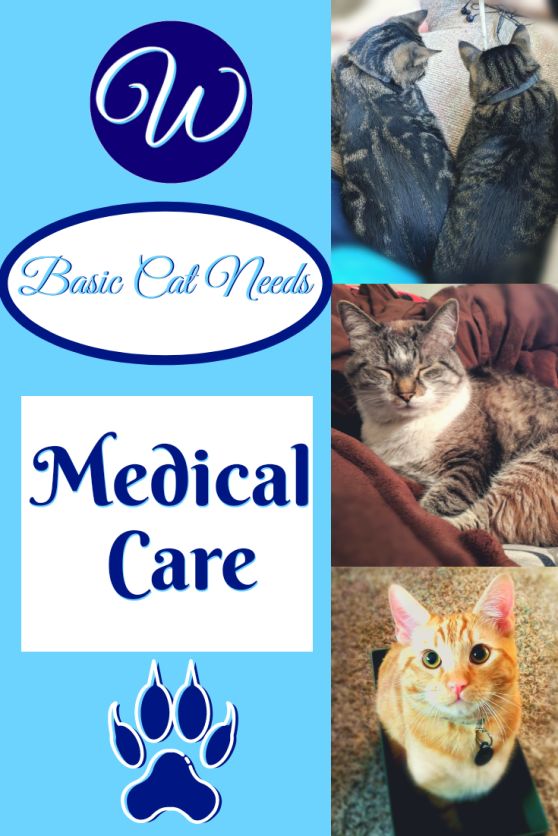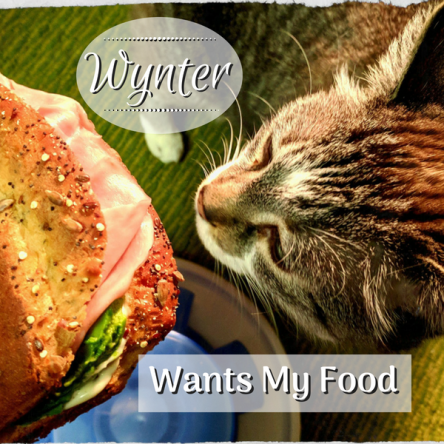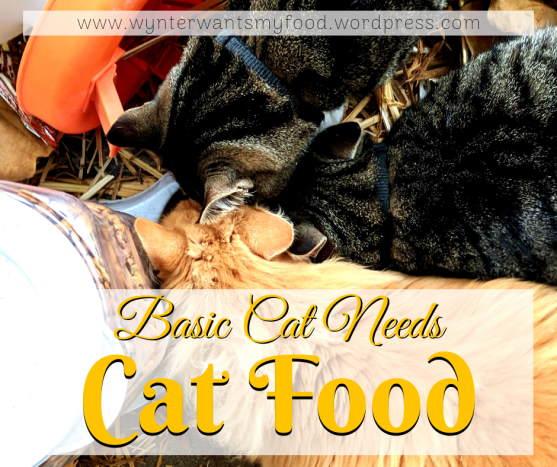This month, I’ve decided on a theme for my blog to follow. I wanted to provide this information from the very beginning, so why not do a mini-series on the topic? We’re going over Basic Cat Needs this October! I know it sounds like common sense, but many people are surprised by the things they didn’t know about their cats.
This week’s topic is Necessary Medical Needs! I’ll go over the basics of the necessary veterinary care over each of the cats life cycle to actually provide adequate attention to their health.

Young Cats
Kittens come first, of course! They will visit the vet about once every month until 4 months old to get their vaccines. You can ask what’s recommended in your area, if you don’t travel with your cat. Some vaccines may not be necessary while others will help prevent common problems in your local area.
Vaccines usually require a series of shots, thus requiring several visits to receive them. You may be able to buy and administer some of the shots yourself (or have a friend do it if you can’t handle their little kitten yells) for a cheaper cost.
You will want to research or ask your veterinarian when the best time is to get your pet fixed. I plan on writing about that in the future… I think it requires it’s own blog post!
Adult Cats
Cats are considered adults between 2 and 10 years old. Adults should visit the vet at least once a year, more if necessary–meaning, if your cat has a condition, it may require more frequent visits.
Senior and Above
After 10, your cat is a senior, and at 14 they’re considered geriatric. Once they reach senior age, you will want to increase vet visits to twice a year and pay closer attention to their well being as they age.
Cats age much more quickly than humans do, this shows especially in their later years. They can start to decline rapidly. Going twice yearly in an effort to catch things quickly will give you the most amount of treatment options.

But why should you go to the vet?
Here are a few good reasons from an article authored by a veterinarian:
Visiting the vet frequently will help familiarize your cat to the experience. It will help socialize your cat as well, reducing the amount of stress she will feel during these times. You will find anything that’s going wrong, faster… because even if you don’t see anything wrong, doesn’t mean your veterinarian won’t either. In turn, this can help you prevent emergency ($$$) visits!
A couple other things that people don’t know or may not think of: going to the vet often can also help catch parasites before they cause serious harm (to your cat AND to you and others living in the house!), and they can help you figure out how to correct behavioral problems by finding the real underlying cause of them.
What I really want you to take from this post is that this is a cost that you need to keep in mind when considering getting a cat! Companion animals are basically here for our entertainment more than anything else these days. We need to take the responsibility of owning a living creature seriously.
How often do you take your cat to the vet? Why? Tell me about it in the comments below, or you can message me here on Facebook or through my contact page! I would love to learn through your experiences.
Would you like to see more of Wynter and friends, or interact with us and her fans? Follow the Wynter Wants My Food Facebook page, and here’s my Pinterest! Where you can find the Wynter Wants My Food board that has all kinds of information, inspiration, tutorials and recipes for cats!















 Sleepy Kitties, Dash (Dark Grey) and Wynter (Light Grey)
Sleepy Kitties, Dash (Dark Grey) and Wynter (Light Grey)






